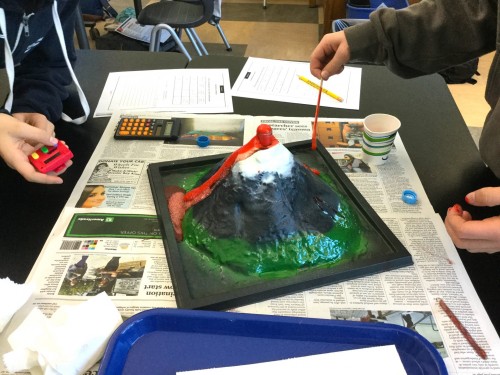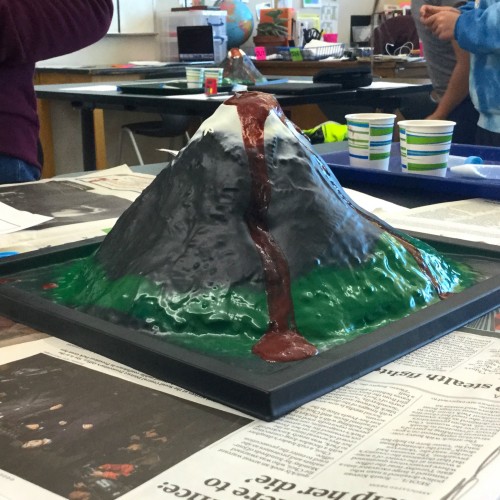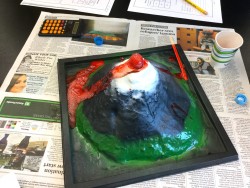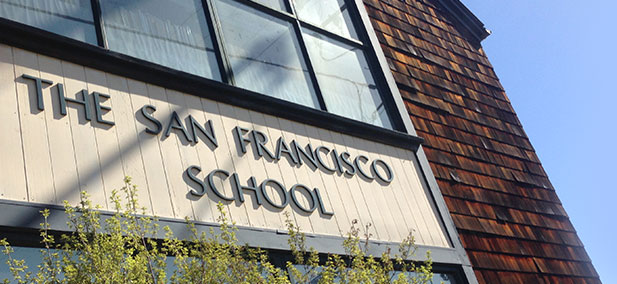6th Graders Learn Plate Tectonics With A Lava Viscosity Lab
Tagged with:
By Luke Bailey, 6th Grade Science Teacher
In 6th Grade Science, we have been exploring plate tectonics, and how physical properties of the earth’s layers affect the formation of geological features. Prior to the lava viscosity experiments in these photos, students learned that viscosity is a liquid’s resistance to flow, and that the viscosity of magma is related to how much silica (think: quartz) it contains. They examined rock samples and categorized them by silica content.

During the lab, they worked in triads to measure the time it took “lava” of three different viscosities to flow down the slope, measured each flow’s distance, and calculated the velocity of the lava.
 Effusive (steadily flowing) lava
Effusive (steadily flowing) lava
Afterwards, we discussed observations and compared our results to find a pattern in the data. Subsequent discussions will help students make the connection between the viscosity of the lava and the shape a volcano takes– freely flowing, low-viscosity lavas make vast, gently sloping shield volcanos like Hawaii’s Mauna Loa, in contrast to the steep-sloped strato volcanos (Mount St. Helens, for instance) where high-viscosity magma makes for more explosive eruptions.
 Viscous lava
Viscous lava
Posted April 02, 2018

